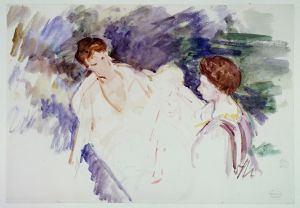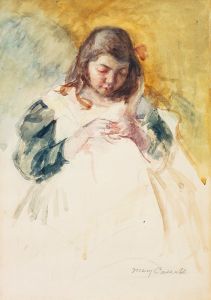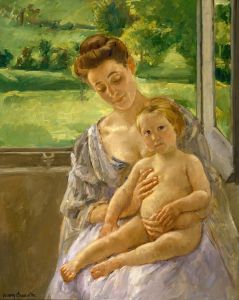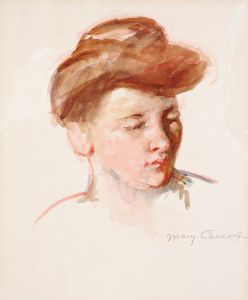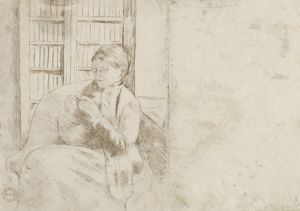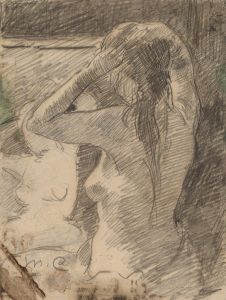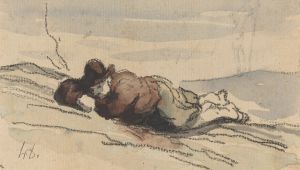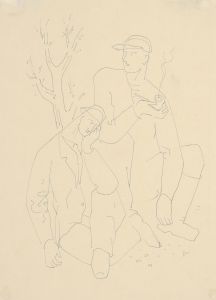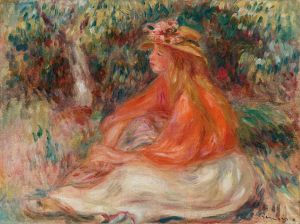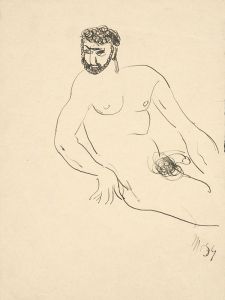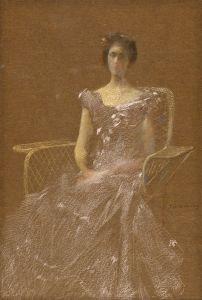
Margot, Resting Arms on Back of Armchair
A hand-painted replica of Mary Cassatt’s masterpiece Margot, Resting Arms on Back of Armchair, meticulously crafted by professional artists to capture the true essence of the original. Each piece is created with museum-quality canvas and rare mineral pigments, carefully painted by experienced artists with delicate brushstrokes and rich, layered colors to perfectly recreate the texture of the original artwork. Unlike machine-printed reproductions, this hand-painted version brings the painting to life, infused with the artist’s emotions and skill in every stroke. Whether for personal collection or home decoration, it instantly elevates the artistic atmosphere of any space.
"Margot, Resting Arms on Back of Armchair" is a painting by the renowned American artist Mary Cassatt, who is celebrated for her contributions to the Impressionist movement and her depictions of domestic life, particularly focusing on women and children. Cassatt, born in 1844 in Allegheny City, Pennsylvania, spent much of her professional life in France, where she became associated with the Impressionists, a group of artists known for their innovative approaches to capturing light and everyday scenes.
This particular painting, "Margot, Resting Arms on Back of Armchair," exemplifies Cassatt's skill in portraying intimate and candid moments. The artwork features a young girl named Margot, who is depicted in a relaxed pose with her arms resting on the back of an armchair. The composition captures a sense of immediacy and spontaneity, characteristic of Cassatt's style, which often sought to convey the natural and unposed aspects of her subjects.
Cassatt's use of color and brushwork in this painting reflects her Impressionist influences. The palette is typically soft and muted, with gentle transitions between hues that suggest the play of light on the subject and surroundings. Her brushstrokes are loose yet deliberate, contributing to the overall sense of movement and life within the painting. This technique allows the viewer to focus on the emotional and psychological presence of Margot, rather than on minute details.
The subject matter of the painting aligns with Cassatt's frequent focus on children and family life, themes that she explored extensively throughout her career. Her interest in these subjects was partly influenced by her own experiences and observations of the social roles of women and children during the late 19th and early 20th centuries. Cassatt's works often provide insight into the private and domestic spheres, offering a perspective that was relatively underrepresented in the art world at the time.
"Margot, Resting Arms on Back of Armchair" is a testament to Cassatt's ability to capture the essence of her subjects with empathy and nuance. Her paintings are noted for their psychological depth and the way they convey the personalities and moods of the individuals she portrayed. This particular work is no exception, as it invites viewers to engage with Margot's world and to appreciate the quiet beauty of a moment of repose.
Mary Cassatt's contributions to art were significant not only for her technical prowess but also for her role in advancing the status of women in the arts. As one of the few female members of the Impressionist group, she broke barriers and paved the way for future generations of women artists. Her legacy continues to be celebrated in museums and collections worldwide, where her works remain a testament to her vision and talent.
Overall, "Margot, Resting Arms on Back of Armchair" is a fine example of Cassatt's work, embodying the themes and techniques that define her artistic legacy. Through her sensitive portrayal of Margot, Cassatt offers a glimpse into the everyday moments that make up the tapestry of human experience, rendered with the grace and insight that have made her one of the most beloved artists of her time.






